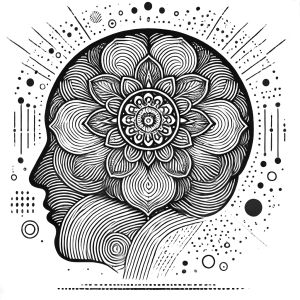InnerMotion – The Guidebook – Train Your Mind

Training your mind is as important as conditioning your body, especially in the art of dance, where emotional expression and mental clarity play significant roles. Cultivating inner peace and a deeper understanding of yourself enhances your ability to connect with the music and your own body. Here’s how you can engage in mental and emotional training to improve both your dance and overall life satisfaction.
- Explore Other Conscious Dance Practices: Participate in classes that focus on movement meditation, such as 5Rhythms, OpenFloor, or Ecstatic Dance. These practices encourage you to explore different emotional and physical states through movement, enhancing your mental flexibility and emotional resilience.
- Practice Meditation and Mindfulness: Regular meditation and mindfulness exercises can improve your focus, reduce stress, and heighten your sensory awareness. These practices help you stay present during performances and may enhance your ability to perform complex movements with greater precision.
- Cultivate Inner Peace and Self-Understanding: Understanding yourself is foundational in expressing yourself authentically through dance. Activities that promote self-reflection and self-awareness can help you identify what moves you - both literally and figuratively. Journaling, spending time in nature, and solitary reflective practices can be excellent ways to cultivate this understanding.
- Connect with Yourself: Connection to oneself is vital in dance. It allows you to convey genuine emotion and artistry. Practices such as yoga and tai chi can enhance this connection by aligning your physical movements with your internal state, fostering a harmony that is often reflected in more expressive and heartfelt dance.
- Engage with Literature: Reading self-help books or literature on dance philosophy and psychology can provide insights into the mental aspects of dance performance. These resources can offer strategies for overcoming anxiety, enhancing presence, and staying mentally engaged and motivated.
- Consider Psychotherapy: Practicing psychotherapy can provide valuable insights that enhance your conscious dance journey by fostering self-awareness, emotional integration, and a deeper connection to your body. Any therapeutic approach that encourages mindfulness and embodiment can be beneficial, but some, like Gestalt therapy and Body psychotherapy, are particularly aligned with movement-based exploration. Gestalt therapy could help uncover unconscious patterns, movement restrictions, and emotional blockages, allowing for more authentic and uninhibited expression. Body psychotherapy focuses on how emotions and past experiences are stored in the body, facilitating tension release and a more fluid emotional connection to movement. Both approaches, along with other forms of psychotherapy, support openness, self-acceptance, and deeper embodiment, helping you move not just physically, but emotionally and psychologically, making dance a true reflection of your inner world.
Training your mind involves a variety of practices, each contributing uniquely to your personal development. By cultivating inner peace, exploring new dance forms, engaging with educational materials, and embracing meditative and therapeutic practices, you equip yourself with the tools to perform with confidence, depth, and authenticity. This holistic approach not only improves your dance capabilities but also enriches your personal well-being and your connection to the world around you.